The cerulean warbler, named for the sky-blue upper feathering of the adult male, is in desperate trouble, especially in its core breeding area — the coal-field region of Appalachia. In 2000 the Southern Environmental Law Center filed a petition, cosigned by 27 other organizations, to list the species as threatened and designate critical habitat. But, strapped for money and human resources, the Service took no action. Finally, in 2006, it announced that listing was not warranted.
But with funding from the Natural Resources Conservation Service (NRCS) available from the Farm Bill’s Regional Conservation Partnership Program the Appalachian Mountains Joint Venture (a partnership of state and federal agencies and NGOs including The Nature Conservancy) is helping private land owners restore cerulean habitat. Work on existing forests in Maryland, Pennsylvania and West Virginia is only in its second year, but already results are encouraging.
In Kentucky and Ohio restoring supposedly “reclaimed” surface coal mine sites to cerulean habitat is a far slower process because the forests have to be started from scratch. The kind of reclamation mandated by the Surface Mining Control and Reclamation Act of 1977 (SMCRA) wasn’t about wildlife; it was about preventing landslides and erosion. So sites were compacted by bulldozer and seeded with aggressive, often alien grasses, legumes, shrubs and trees including lespedeza and autumn olive. Instead of creating forests these plantings precluded them.

SouthWings, a group of volunteer pilots who show journalists the tracks of industry as they exist on the landscape rather than on a glossy promo, has twice flown me over former cerulean warbler habitat in West Virginia. As far as I could see on all compass points the mountains of the Cumberland Plateau had been razed and with them the planet’s most diverse and productive temperate forest. The largest non-nuclear explosions ever detonated were converting mountains to stumps. And between the stumps, now cluttered with draglines, bulldozers, trucks and giant drills, toxic coal slurry festered in leaky “holding ponds.” It wasn’t “mountaintop removal”; it was mountain-range removal.
At least some of the “reclaimed” sites have reverted to the original landowners after issuing of SMCRA-required bonds posted by the mining permittees. So the Joint Venture can work with these landowners to do genuine reclamation for ceruleans and a host of other species that require similar habitat.
So expensive is this work that few landowners can afford their 25-percent cost share. Fortunately, however, NRCS (which usually provides 75 percent under the Farm Bill’s Regional Conservation Partnership Program) allows the landowners’ share to be covered by partner contributions such as donation of potentially blight-resistant American chestnut trees by the American Chestnut Foundation. And NRCS helps implement genuine mine-site reclamation by providing financial assistance to the Foundation and Green Forests Work.
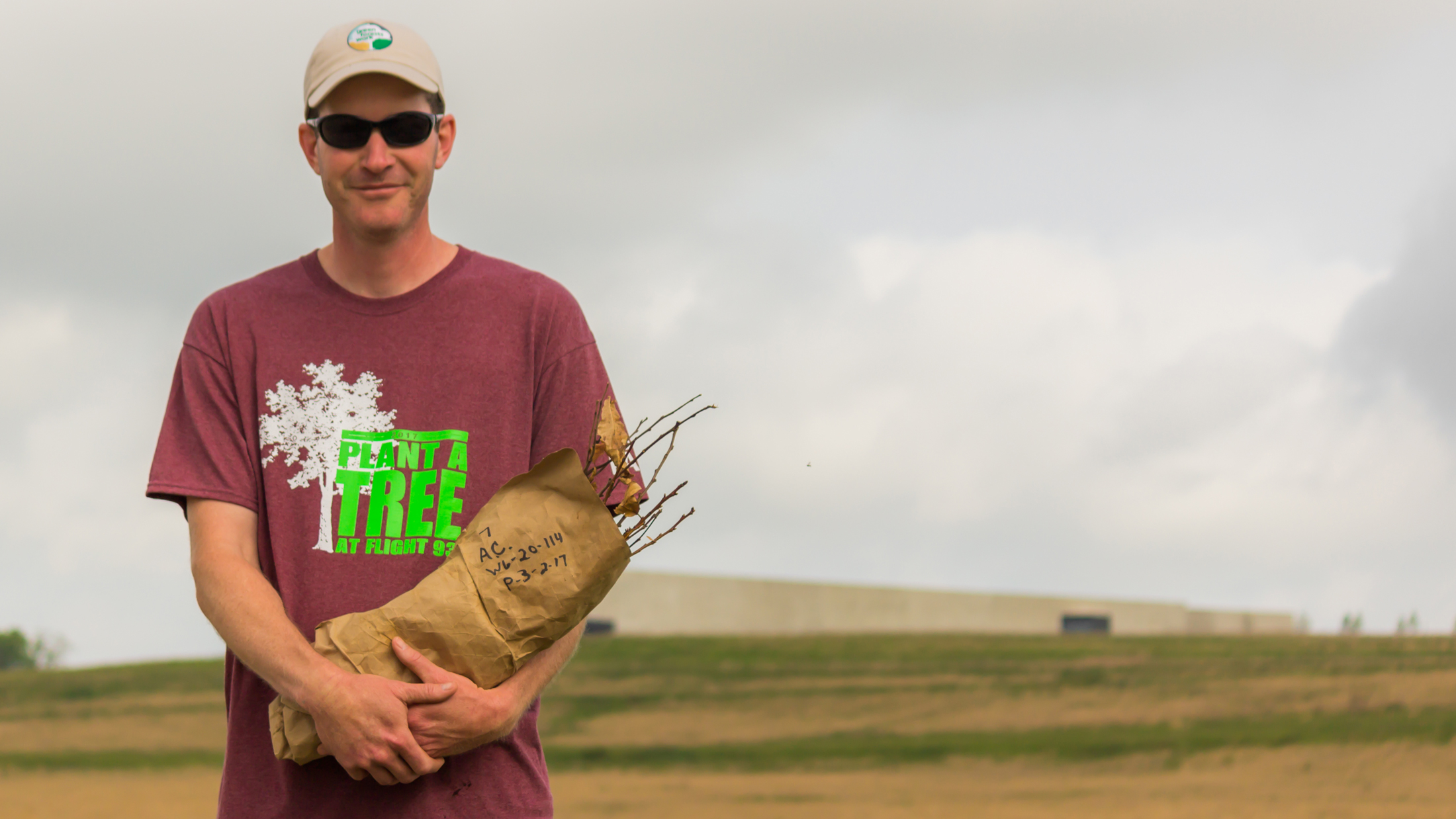
Employed by both organizations is a forester named Michael French. He offers this: “To establish native hardwoods we have to control the competing vegetation either through targeted herbicide use or by bulldozing it and the seedbed out of the way. These invasives are tolerant of compacted conditions, so we plow up the ground with a large bulldozer that has three-foot ripping shanks on it. It’s like tilling your garden. This way rain can infiltrate the soil and be more slowly released, and roots can grow out in all directions.”
I asked French if Green Forests Work gets criticized for using herbicides. “Sometimes,” he replied. “Our response is this: ‘Well, show us another way.’ There is no other way except to push everything down to bare earth, and we do that when we can. But sometimes herbicides are the only tool we have.”
This work is important not just for ceruleans but to get American chestnuts back on the landscape after close to a century’s absence. The loss of these important mast-producers throughout their range (a wide swath from upper New England south to Alabama and Mississippi) was devastating to hundreds of wildlife species. The trees being planted are the Foundation’s most advanced generation of potentially blight-resistant chestnuts — 15/16th American and 1/16th Chinese. “We’re hoping they’ll have the growth characteristics of American chestnuts and retain the blight resistance of Chinese chestnuts,” says French.
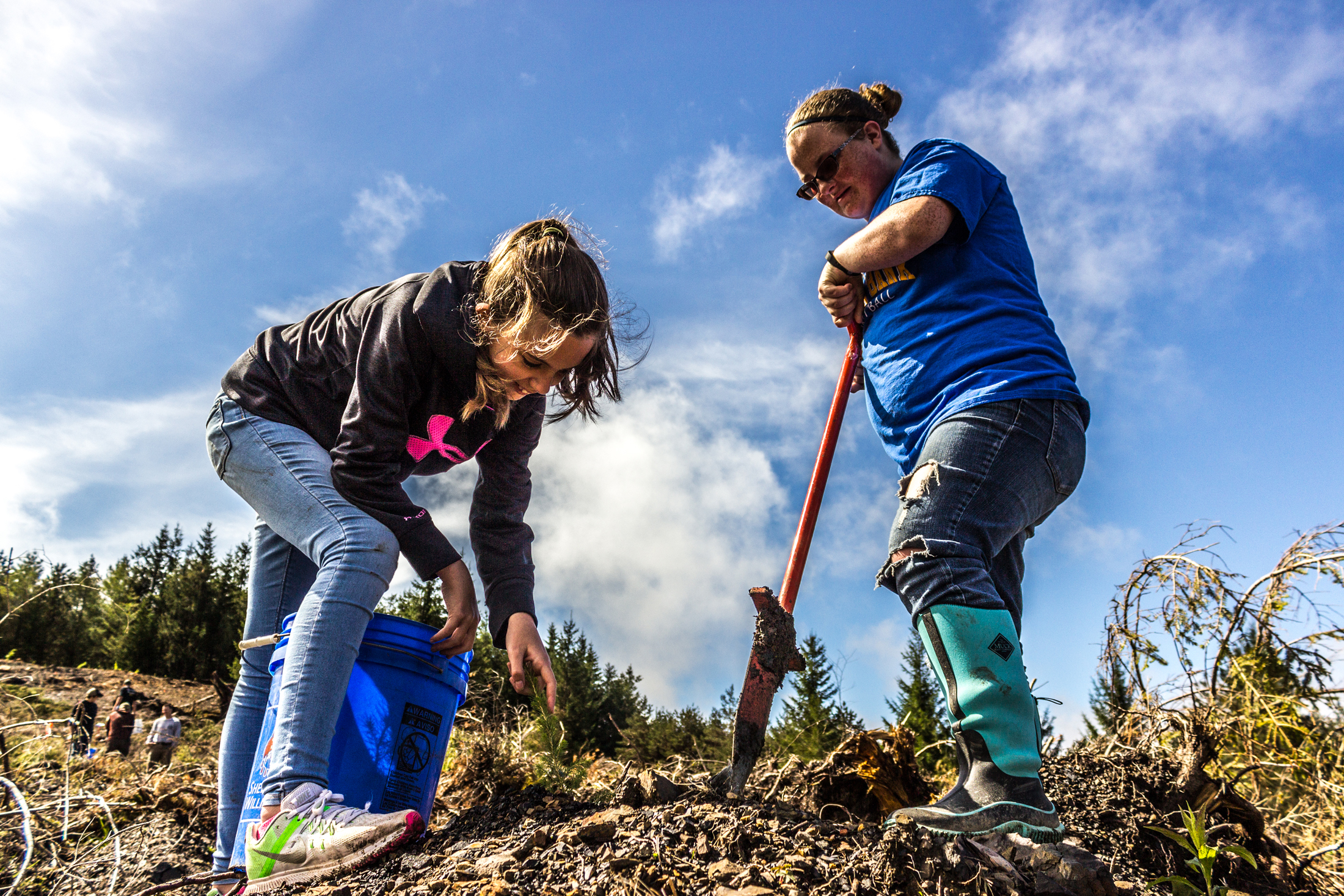
By contrast, results of cerulean habitat work in the forests of Maryland, Pennsylvania and West Virginia seem instantaneous. For example, last winter a 60-acre tract in central West Virginia was partially opened with a shelterwood cut (prescribed for ceruleans). In spring it was occupied by six males.
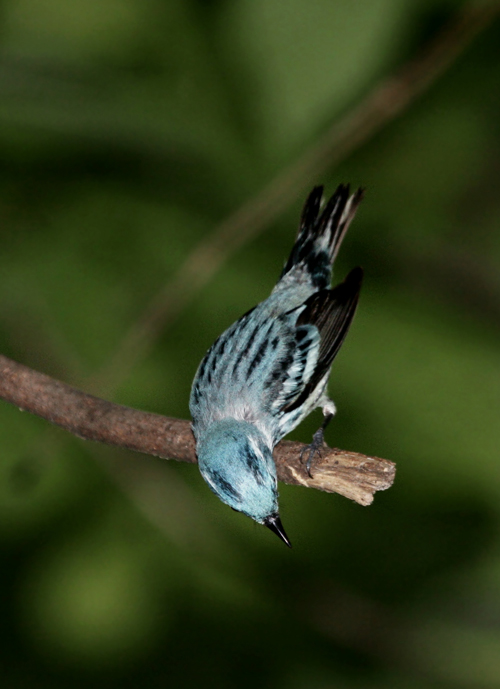
Dr. Petra Wood, a USGS research wildlife biologist who teaches at West Virginia University, has been studying ceruleans for 20 years. She and her graduate students have established most of the forest-management prescriptions for the bird’s recovery. You open a closed canopy, thinning poorly formed trees that have little value for wildlife or timber and leaving the hickories, sugar maples, cucumber magnolias, black cherries and, especially, white, swamp and chestnut oaks. Fortunately, this is also a prescription for good silviculture.
“Caterpillars favored by ceruleans tend to be more prevalent in the white-oak family,” says Wood. “And white oaks tend to have more open canopy structure. That gives the birds far easier access to nest high in the canopy. We understand that forest managers and landowners are trying to make money. White oaks and hickories are often high value, but if you really want to help the cerulean, try to leave as many of those as you can. One of the things we’re looking at is how much of the canopy you can remove and still have good habitat for cerulean warblers. These birds like canopy gaps, but a lot of our forests have closed, even canopies. We see higher abundance of ceruleans and an increase in nesting output where timber has been harvested.”
A big factor in cerulean decline is thought to be loss of winter habitat in the wooded high country of northern South America. There’s an international effort to preserve these tracts and a concurrent effort to encourage shade-grown coffee production over the standard method that requires forest removal. “Some people think this is where we should be doing all the work,” Wood says. “But because cerulean warblers breed in our eastern hardwood forests that’s the only place you can produce more of them. So we need to do what we can in the short term for the breeding habitat.”
Is the high market value of white oaks and hickories discouraging landowners from leaving them for ceruleans? I put the question to Michael Eckley, The Nature Conservancy’s Working Woodlands forestry manager in Pennsylvania. “No; I don’t think so,” he said. “These trees have tremendous benefits for wildlife; and landowners traditionally are interested in big game. It’s an easy sell if you talk about [such mast eaters as] bear, deer and turkey. Then you transition your narrative and explain the value of warblers and other species. The Conservancy’s niche is building relationships with landowners, helping them understand that good forest management can contribute to traditional values and spinoff benefits for species of conservation concern, maybe species these landowners are not aware of.”
The Conservancy’s Working Woodlands Program, which protects private forests with conservation easements while still allowing sustainable timber harvest, doesn’t specifically target ceruleans. But by promoting forest diversity and health, protecting hard-mast producing trees and encouraging desirable understory vegetation, the program helps foster forest conditions ceruleans require. “The Nature Conservancy has worked with landowners who enrolled in Working Woodlands to continue active management that would make the forest healthier and that lines up well with our cerulean forest management guidelines,” says Todd Fearer of the American Bird Conservancy.
Fearer, who serves as the Appalachian Mountains Joint Venture coordinator, was hoping for 2,000 easement acres for ceruleans from the Conservancy’s Working Woodlands Program. Instead he got 8,200.
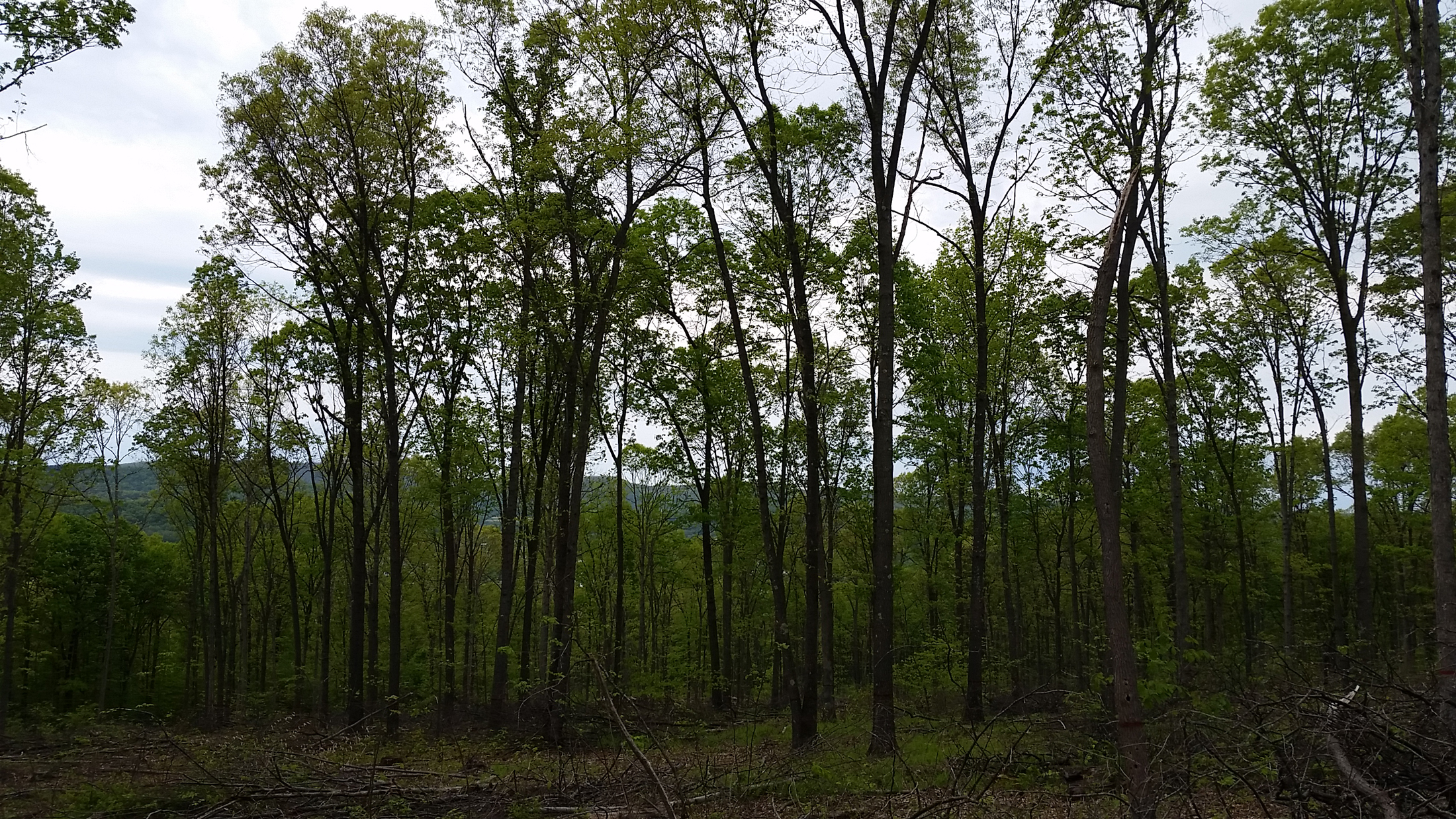
To a large extent the fate of the cerulean warbler is tied to the 2018 Farm Bill. “Keeping the conservation titles in there is critical,” says Fearer. “The current Farm Bill’s Regional Conservation Partnership Program (RCPP) is how we’ve been able to accomplish almost all the private lands work. Its beauty is that it focuses on the public-private partnerships and encourages the partners to work with NRCS.”
“RCPP has empowered communities and driven public-private partnerships to find local solutions to difficult natural-resource challenges,” adds Jenny Conner Nelms, The Nature Conservancy’s Senior Policy Advisor for Agriculture. “The program has mobilized over 2,000 conservation partners who have committed $1.4 billion to on-the-ground projects, almost doubling the amount of federal funding.”
Unfortunately, the Trump administration has zeroed out RCPP in its proposed budget. If Congress goes along with that recommendation, the prospects for the cerulean warbler will turn from sky blue to coal black.
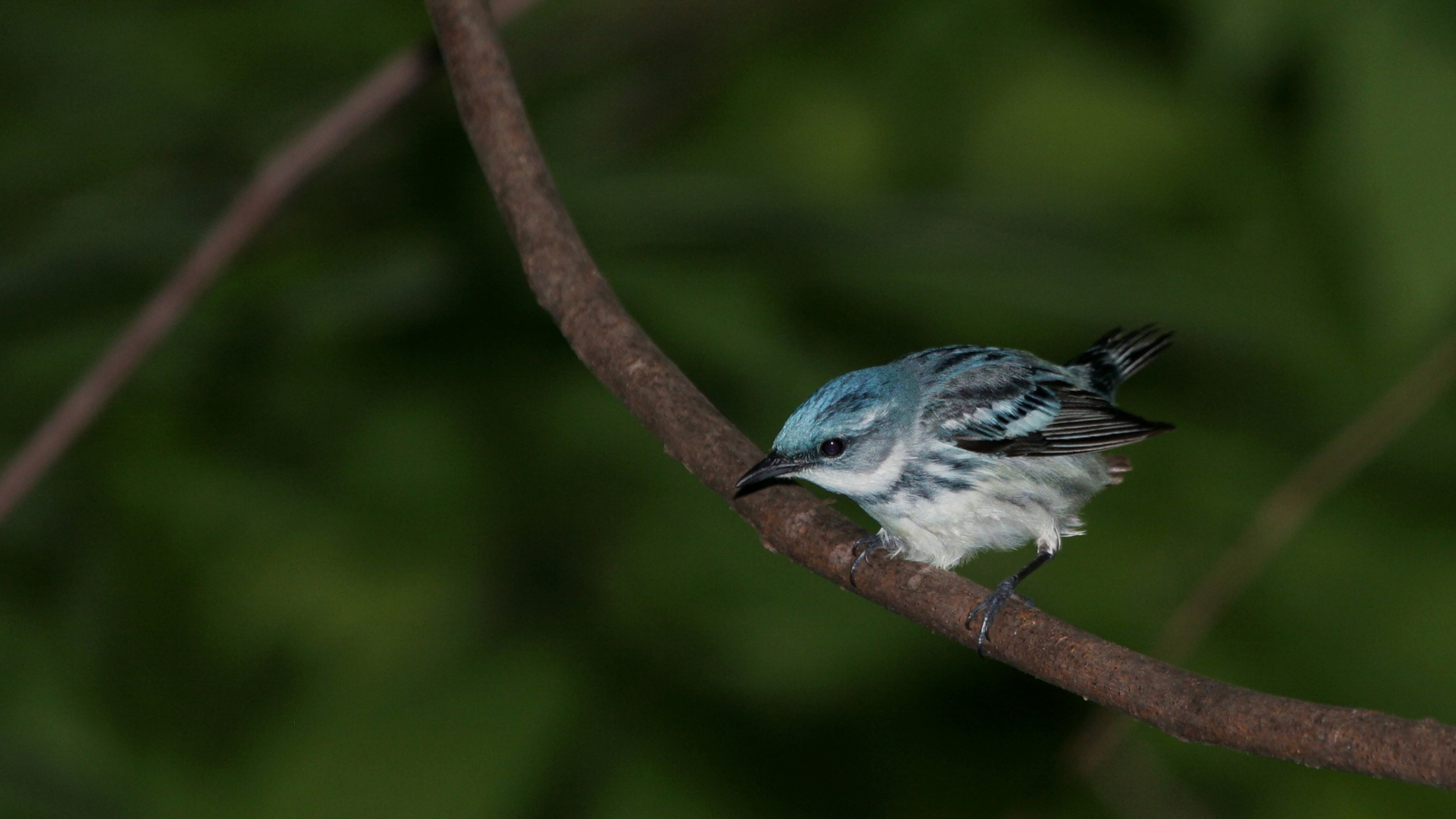
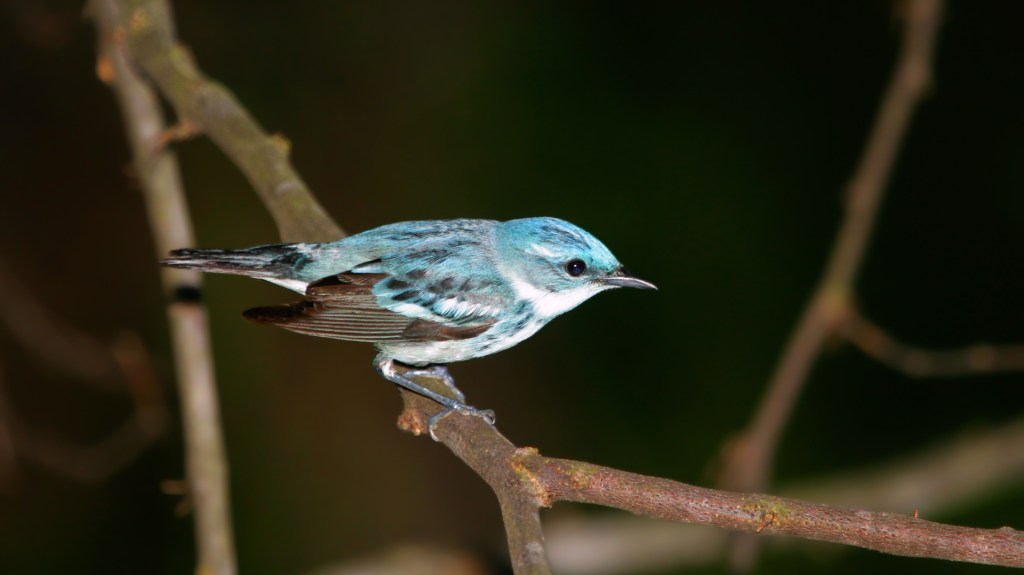



Well, IMHO, the bird has been given “the bird” by this disastrous administration. The “bottom line is not enriched by saving this beautiful bird…and that is ALL this group of numbskulls care about.
I hope the someone in the Trump Administration can be persuaded to spend this small amount of money which will also greatly help deer and turkey hunters.
Thank-you for the info, grateful for all the efforts and the hard work !
With the warming of the climate, is it possible that the cerulean warbler range might change? Might that help in its survival?
Save all the Animals and Earth forever.
I believe in this very important work to save the Cerulean warbler. With habitat loss in South America and Central America, warblers such as the Cerulean are critical to the food chain as well as to bird watchers all over the
world. These small delicate-looking birds whose specialized forest cover are beneficial to humans and should not be reduced any further. I would like
to see at least one more in my lifetime.
We are going to take a huge step backward in the protection of all wildlife under the current administration. Some species are on the brink, now. With the loss of financing to preserve wildlife areas and replace lost trees, grasses, food sources and other items that support them, they likely will not survive.
Wonderful, thoughtful, and much needed work. Thank you.